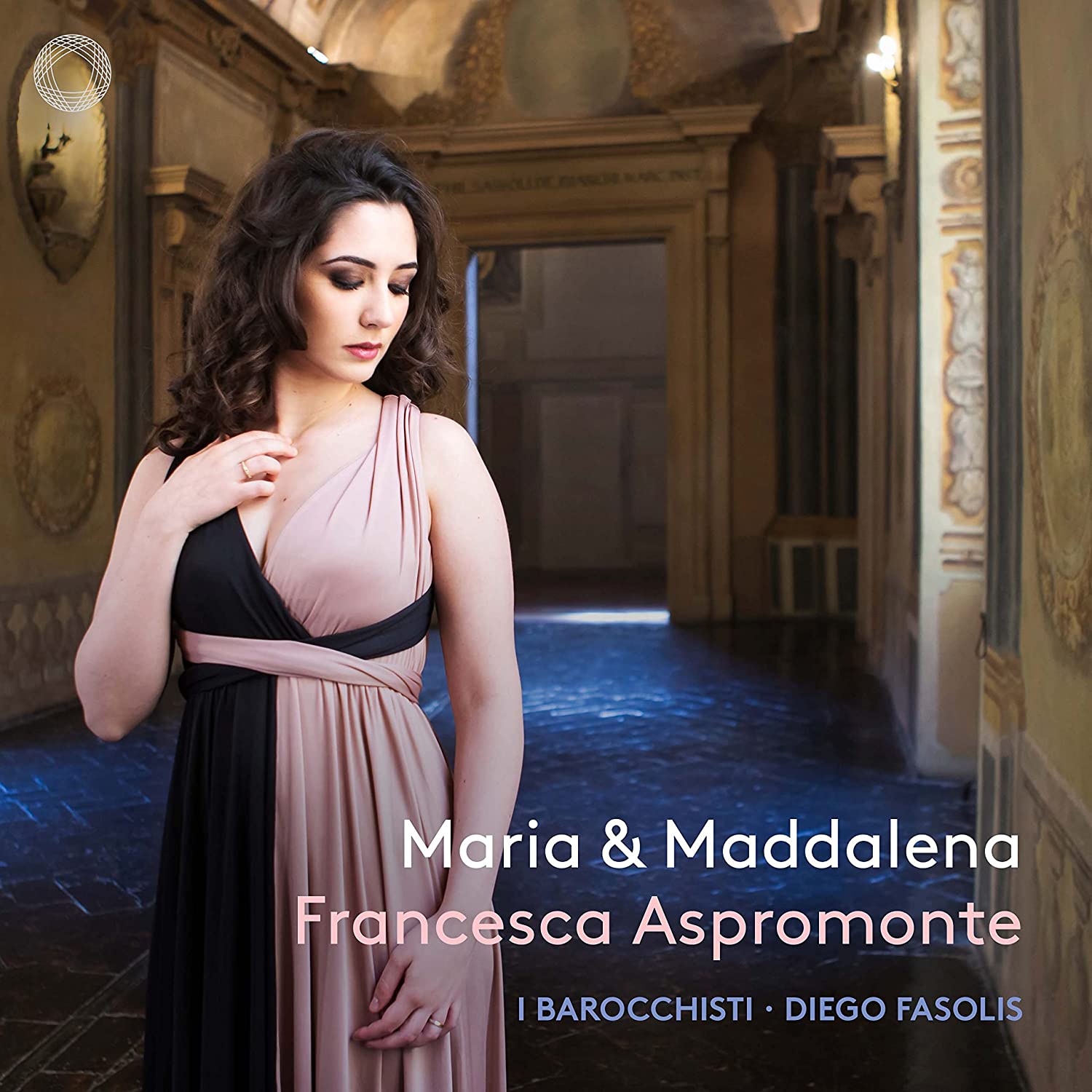Francesca Aspromonte (soprano, I Barocchisti, conducted by Diego Fasolis
62:09
Pentatone 5186 867
Click HERE to buy this on amazon.co.uk
[These sponsored links are your only way to support the site and continue to enjoy these reviews FREE!]
Francesca Aspromonte’s first recital CD was a somewhat disparate collection of excerpts from operatic prologues. Here, as related to both topic and musical idiom, she here essays a more cohesive collection. It is based around the two Marys, the Virgin and Mary Magdalene as portrayed in oratorios dating from around the turn of the 18th century, itself one of the more fascinating periods of musical history. On paper it would be hard to imagine two more contrasted figures than the two Marys, one chosen as the immaculate conceiver of God in the human form of Jesus, the other a woman torn between spiritual and carnal love. Yet there are links between them in their love for Jesus and their sharing of suffering at the Cross, in the case of the Magdalene love and suffering sufficiently ambiguous to inspire in a great novel like Katzantzakis’s The Last Temptation, a novel that enraged the Roman Catholic church.
Here, unsurprisingly for works that owe their existence to the Counter-Reformation, we meet with no such ambiguity. In the case of the Virgin there are texts that summon up the mystery of the Incarnation, as in the aria ‘Ecco qui l’incomprensibile’, provided by the spiritual and highly musical Holy Roman Emperor Leopold I for Antonio Draghi’s Il Crocefisso per Grazia (1691). This is the earliest of the oratorios represented and significantly the only aria in strophic form at a time it was rapidly being superseded by the da capo aria. Another nod back to the fading 17th century can be heard in the highly expressive recitivo cantando from the little-known Giovanni Lulier’s Oratorio à 6 per la Nascità. Probably composed not long before his death in 1700, the extended passage is the Virgin’s lullaby on the fate awaiting the infant who lies under her gaze. Most exceptional of all the music for the Virgin on the disc is the closing sequence from Alessandro Scarlatti’s La Santissima Annunziata composed in Rome in 1700 or 1703 to a text by Cardinal Ottoboni. It opens with an exquisitely lovely aria, ‘Stesa a pie’ prefaced by chromatic orchestral stabs to the heart in which the Virgin’s gaze is now directed to the broken torso of her son. A more animated central section follows in which she evokes ‘redeemed mankind’, a topic expanded upon in the following recitative. The oratorio’s final aria is an animated message in which Mary recognises she will become a symbol of refuge for future generations.
Among those much influenced by Scarlatti was the young Handel, whose Roman sojourn was capped in 1708 by the oratorio La Resurrezione, from which Aspromonte sings two of Mary Magdalene’s arias, the first, ‘Ho un non so che nel cor’ from scene 2 expressive of her hope, but also disquiet, the second Mary’s final aria, ‘Se impassibile, immortale’, a joyously buoyant celebration of the Resurrection. We meet the more vulnerable, penitent side of the Magdalene in two arias from Antonio Caldara’s Maddalena ai piedi di Cristo (c. 1700), an outstanding work recorded complete by René Jacobs in 1995. Of exceptional beauty is the recitative and aria from Part 2, ‘Deh, s’un tempo’ … ‘In lagrime stemprato’, in which a tearful Mary invites Jesus into her heart over a throbbing repeated note pattern in the accompaniment. The music has a dignity that at the same time cannot hide the deeper feelings lying barely beneath the surface.
It’s a repertoire that suits Aspromonte well. The voice itself is full and rounded, yet hints of vibrato are kept well under control. In the many cantabile arias here, she shapes lines with great musicality and if an occasional suggestion of lack of control in the upper register creeps in it is never a major problem. Passaggi are cleanly articulated, the mostly tasteful ornamentation less so and there is regrettably no sign of a trill. But most importantly Aspromonte sings with excellent diction and real communication skills, projecting the varied emotions of the two Marys with a vivid immediacy.
The experienced Diego Fasolis and his I Barocchisti provide well played support; the lovely cello obbligato in the first of the Caldara arias is especially noteworthy. Just occasionally Fasolis’ old habit of clipping notes comes to the surface but here it is not a serious problem. An outstanding and lengthy booklet essay sets the seal on an issue that is of real value, not only for the quality of the repertoire, some of it rare, but the manner in which it is performed.
Brian Robins
